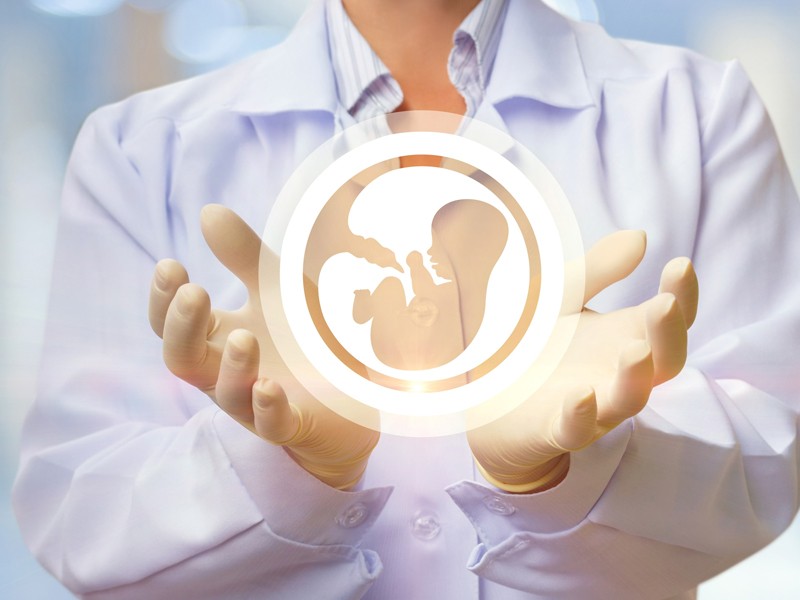Types of embryos for IVF procedure

The stage of selection of an embryo that will be implanted into a woman’s uterus is one of the most difficult in IVF. Indeed, the process of pregnancy as a whole depends on the quality and degree of development of the embryo. Only a viable embryo will be able to implant, continue development in the uterusand become a healthy fetus in future.
Also it’s necessary to understand that not every egg is capable of fertilization and gives a good embryo in the future. Therefore, the embryologist is an important person during the IVF procedure. He determines which eggs can be fertilized, then carries out the cultivation of the embryos in an incubator, and monitors the growth and quality of the embryos during this period. And in the end, he gives his conclusion which embryos are well implanted and will achieve full development.
In order to understand how the quality evaluation and classification takes place, first we will analyze the development of the embryo, in the incubator, even before it is transferred to the uterus.
How does the embryo develop outside the woman’s body?
After the puncture, the embryologist cleans them and evaluates which egg he will use. Then they are fertilized with sperm. There are 2 methods used by doctors: in vitro – in a “test tube”, a drop of liquid is added to the oocytes, in which spermatozoa ready for fertilization float, and ICSI – a method in which one selected sperm is injected directly into the egg, using a special microneedle.
Already after 15-17 hours, the fusion of the maternal and paternal genetic material begins. This day is called zero.
- The first day – a zygote is formed – one cell containing already a double set of chromosomes.
- The second day – cell division – at first 2, 3 and at the end of 4 blastomeres are formed. It is already possible to assess the quality of the embryo at this stage by the degree of fragmentation, the size and shape of the blastomeres.
- The third day – the cell division phase continues – now the embryo consists of 6- 8 cells. During this period, its quality is also evaluated according to the same criteria. In some cases, at this stage it is already possible to implant the embryo into the uterus.
- The fourth day – the morula stage begins – the embryo already consists of 10-14 cells. Its sides are smoothed out and a cavity is formed inside. When the cavity occupies 50% or more, it is called a blastocyst.
- 5-6 days – blastocyte stage – this is the best period for embryo implantation into the uterine wall. At this point, the development and size of the blastocyst cavity is important. As the blastocyst grows, its outer sheath becomes thinner and ruptures over time. The embryo leaves and attaches to the uterus, where it will develop throughout the pregnancy.
What can the quality of embryos depend on?
First of all, the quality of the formed embryo depends on the state of health of the parent germ cells. If they were full-fledged, healthy and without pathologies, then the chances of success increase significantly.
The next factor is the qualifications of the clinic staff and the equipment with which the cultivation is carried out. Embryos at the developmental stage are extremely sensitive to any changes and can stop their development even because of the slightest disturbance.
And the last factor that the doctor can’t influence is chromosome abnormalities. The development of the embryo “in vitro” directly depends on their presence. They may not allow it to implant to the uterus, to stop the cell division process in time, etc. To prevent such complications, the doctor evaluates the quality of the embryo every day, and sometimes several times a day.
How is the quality of the embryo evaluated?
The most informative is the evaluation of development in dynamics, during the entire period of embryo cultivation. The fertility specialist monitors and records all the changes that have occurred in each embryo on a specific day. Usually no more than once a day, he pulls them out of the incubator and monitors them under a high magnification microscope. It is important to do this quickly, because the embryo is sensitive to changes in the external environment.
Embryos are evaluated according to the following criteria:
- appearance – they must be of the correct shape, without deformations, differ in size and without compactions.
- the number of cells and the total size – these criteria must correspond to the day of development.
- the presence of non-nuclear cells – there should be no more than 25% of the total amount.
- the presence of intracellular inclusions – they should not be present, because destruction of the cell can occur through the structures that have formed inside the cell.
After each evaluation, he classifies the embryos according to the quality and possibility of implantation. Throughout the entire time, he draws up an embryo protocol, where he fixes any changes.
Embryo classification
All embryos develop normally during the entire incubation period very rarely, so doctors need to understand which are viable and which are not. And they are finally checked and classified on the day of embryo transfer. This is usually the 5th day after fertilization. It is the most informative for determining the potential of embryos and we can say which will attach and be able to develop fully and which one will not with a high probability.
In order understand which embryos are suitable for transfer to better, every day the doctor assigns them a quality code, which consists of one number (stage of development of the embryo) and two letters (the first is responsible for the formation of the fetus, and the second for the chance of attachment and formation of the placenta with chorion)
The numbers are points from 1 to 6 points, where 1 is an early blastocyst, 6 is a mature embryo ready for transfer.
The letters are the quality score, where A is a good embryo, D is a poor quality.
All this is recorded in the embryo protocol. It is a journal where the embryologist records all data and changes in each embryo from the first to the last day of cultivation.
For example, embryos under the code “3AB”, “2AA”, “4BB” are blastocysts with high reproductive potential, “2BB”, “2CB” are of average quality. In turn, “1CD”, “2СС”, “2DD” are blastocysts of poor quality and the chance of their attachment to the uterus is very low.
It should be noted that often embryos with the code “2BB”, “2CB” can develop into “4BB” “3AB” after a short period of time. Therefore, you should not make conclusions until the day of transfer.
Also, this classification helps foresee whether the embryo can be cryopreserved. According to statistics, only high-quality and mature blastocysts can survive freezing and then continue their development.
Of course, medicine does not stand still, and today there are more modern methods of control of the embryo. Recently, the technology of continuous monitoring using time-lapse microscopy has been introduced. A microscope with an automatic photographing program is placed in a special incubator after a certain period of time. Then the materials are sent to a common computer, and he, having received the finished photos, evaluates and gives an opinion on the development and quality of the embryo.
The big advantage of this method is that it allows you to evaluate the dynamics of the development of the embryo, their quality, without removing it from the incubator, which reduces the negative external impact on the embryo, and therefore does not worsen its quality.


